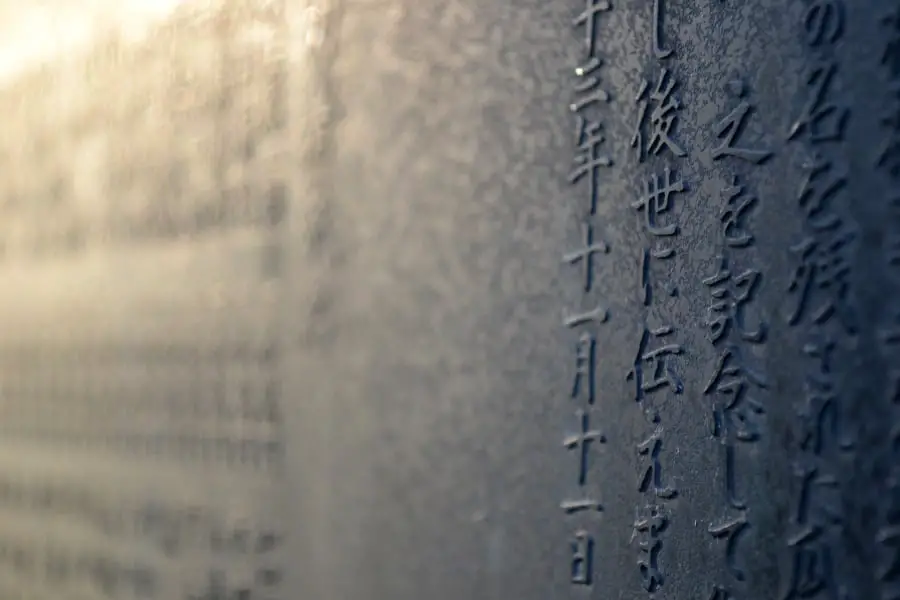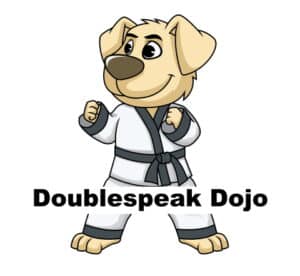For anyone learning Japanese, or is interested in learning, it can definitely be intimidating when hearing that Japanese has three writing forms: Hiragana, Katakana, and Kanji. Out of all of them, Kanji is considered to be the hardest because it’s not phonetic like the others and it requires a lot of memorization. This leaves some of those learning Japanese frustrated wondering why Kanji exists in the first place. So, what is Kanji used for in Japanese writing?
Kanji is used to help condense long sentences. It makes it easier to read sentences by giving structure by making distinctions between words which otherwise would be difficult. Kanji is used in daily Japanese life through all aspects of writing, along with the help of Hiragana and Katakana.
Is Kanji necessary to learn though? Why do Japanese even still use it? Should Japanese speakers just use Hiragana instead? Let me share with you the answers to those questions and more from what I have learned looking it to the subject and studying Japanese in college.

Contents
Is Kanji Necessary To Learn And Use For Japanese?
When learning Japanese, one will quickly encounter how Kanji can be quite a mountain of work to muddle through, thus leading one to wonder if it’s even necessary to become literate in Japanese. Unfortunately, considering the alluring prospect of abandoning Kanji altogether will be a useless endeavor since Kanji plays a vital role in the Japanese writing systems.
Kanji plays a vital role in the Japanese language in numerous ways. It reduces complex or long sentences, by giving much needed structure as opposed to only Hiragana or Katakana usage. Kanji can make phrases and concepts that otherwise Hiragana or Katakana would be limited in doing.
Even though learning Kanji can be a difficult goal to achieve, it is certainly a necessary requirement to be able to live in daily Japanese life comfortably. That being said, they are some exceptions in where Kanji is used sparingly.
In most cases, children’s writings use Hiragana exclusively. Sense Kanji is difficult to learn (we’ll get into some of the reasons why later) Japanese children at a young age instead focus on learning Hiragana and Katakana first.
Why Do Japanese Still Use Kanji?
It’s not surprising for those who are learning Japanese writing to wonder why Kanji is still being used despite it requiring a lot of work to learn. Why isn’t there something better and easier that won’t require you to memorize thousands of Kanji images? Why not just use Hiragana or something like that instead?
Just Because Kanji Is Hard Doesn’t Mean We Shouldn’t Use It
Some Japanese language learners wonder why Kanji exists in the first place. There are even some who would go as far as to say that the Japanese should drop Kanji altogether because it’s so hard to learn. Though it’s understandable where these positions comes from, nonetheless they’re flawed.
In every language, including English, there are plenty of silly and unnecessary confusing phrases or rules. For instance, the English language includes idioms, which are sayings that mean something entirely different than what one actually means to say. Yet, many people learn English everyday just fine despite idioms being a foreign concept to some people of different languages and cultures.
Idiom-an expression in the usage of a language that is peculiar to itself either in having a meaning that cannot be derived from the conjoined meanings of its elements (such as up in the air for “undecided”) or in its grammatically atypical use of words (such as give way). Definition from Merriam-Webster dictionary.
So, just because Kanji might be hard for you to learn, it does not mean it should change. Like any language, there are plenty of odd things that come about over time, yet that shouldn’t necessarily mean that it should be changed.
Interesting fact: Languages develop first. Only afterward are grammar and usage rules created. Languages come from common use throughout time, which accounts for many odd or difficult elements.
The Practical Reasons For Kanji
Unlike a lot of western languages, the Japanese don’t actually put spaces between each word. As such, the three forms of writing in Japanese (which of course includes Kanji) compliment each by actually helping put distinctions between words.
The Chinese are similar in this regard because they also don’t put spaces in between words. Part of the reason for this is that Kanji actually originated in China and came to Japan many centuries ago. Thus, they use a similar writing form, even though the representations between the two countries are bit different now.
One interesting thing to consider too is that the Chinese actually only use Hànzi for there writings. Whereas the Japanese instead prefer a combination rather than one specific writing system. For some this makes Japanese writing easier to read, write, and learn.
Another point to make before moving on is that to remove Kanji from the Japanese language would be to remove a piece of their culture, even if that piece of culture requires a ton of effort to grasp.
What Is The Difference Between Katakana, Hiragana, and Kanji?
So, if there are three writing forms in the Japanese language then what is the difference between the three? Well lets discuss how they’re are used, which in turn will reveal how they are different.
Katakana is primarily used for foreign terms and phrases. This phonetic group of symbols can be used in other ways, but that requires experience in the Japanese language to know when that is appropriate or not.
Hiragana is like Katakana in some ways yet deals mainly native words and phrases. It can also change or replace Kanji words, making it a more popular and commonly used writing form. Aesthetically, Hiragana is more ‘cursive’ or curved in form, whereas Katakana is usually more angled.
Kanji is the sort of building blocks for the Japanese written language which is usually used with Hiragana. It is used because it helps reduce long sentences and helps makes sentences readable. Kanji, unlike Katakana and Hiragana, is not syllabic
Phonetic-Also pho·net·i·cal [fuh–net-i-kuhl]. of or relating to speech sounds, their production, or their transcription in written symbols. –Dictionary.com
So, each writing form has its own use and function. Hiragana and Katakana both are actually referred to as the Kana because they’re phonetic and alphabet based. Whereas Kanji is not phonetic and instead reflect the idea than rather what is sounds like.
If you would like to jump in and get started learning to write Hiragana, it is EASY and FREE with our Hiragana practice sheets found here.
Should I Use Kanji Or Hiragana?
The question really shouldn’t be about which one to use over the other, but rather when to use either one because both are important in Japanese. So, the question should be, ‘when do you use Kanji and Hiragana‘ rather than ‘should I use Kanji or Hiragana.’
I touch upon this subject in my other article, “What Is Hiragana Used For In Japanese Writing?” where I discuss as well when to use Hiragana or Kanji. So, knowing when to use the two writing systems falls down to three main things: aesthetics, context, and situation.
Aesthetics refers how it might look in a sentence, because sometimes having one sentence of just Hiragana can make it a jumbled mess. Or, having a obscure Kanji symbol meaning might go over a readers head and as such might require Hiragana to replace the word or explain it through the means of Furigana.
Furigana-is a reading aid used by Japanese writers when they think their readers might not understand a particular Kanji symbol. So, Furigana (in Hiragana) is used to help explain the meaning by being written on top or the side of the Kanji symbol.
Context and situation both refer to what might be appropriate at a given time. For instance, Hiragana is nearly always used with young children because it is easier to learn than Kanji. Another example could be that when writing a formal letter of any sort it might be more common to use Kanji.
Are Japanese Kanji Symbols An Alphabet
In the Japanese language, Kanji is actually not a alphabet, whereas Hiragana and Katakana are. Hiragana and Katakana, also known as the Kana, are closer to the English alphabet.
Kanji on the other hand, are like pictographs, which means each symbol or picture mean something specific, and only mean that one thing. Although you can combine Kanji symbols to create a different meaning, it is usually a concept or phrase one is making when using Kanji.
Sense it is not an alphabet, Kanji has no restrictive amount of symbols allowed for use. This leads to a incredible amount of Kanji available.
It is to the point where no one actually knows the current amount of these symbols, sense many have fallen out use and other related reasons. So, tens of thousands of Kanji symbols actually exist and we have no real way of knowing the exact number other than using educated guesses.
Yet, is has been said that for most Japanese speakers, they only commonly use around 2000 Kanji symbols today. These Kanji are refer to as Jōyō Kanji. So, to actually be considered literate, then you don’t need to learn tens of thousand of Kanji but rather a mere couple thousand.
2000 Kanji is still a lot, but better than the alternative of learning a ridiculous amount (80,000+).
The What Is Kanji Used For Final Talking Point…
Kanji has played a integral role in the Japanese language for the centuries now. By reducing unnecessary long sentences and makes it easier to read by putting distinctions between words Kanji is used in daily Japanese life.
Along with Hiragana and Katakana, Kanji is makes up the Japanese writing system to make truly unique way of writing.
If you liked this article, then for more information regarding the Japanese language and Japan itself, read some of my other articles!
